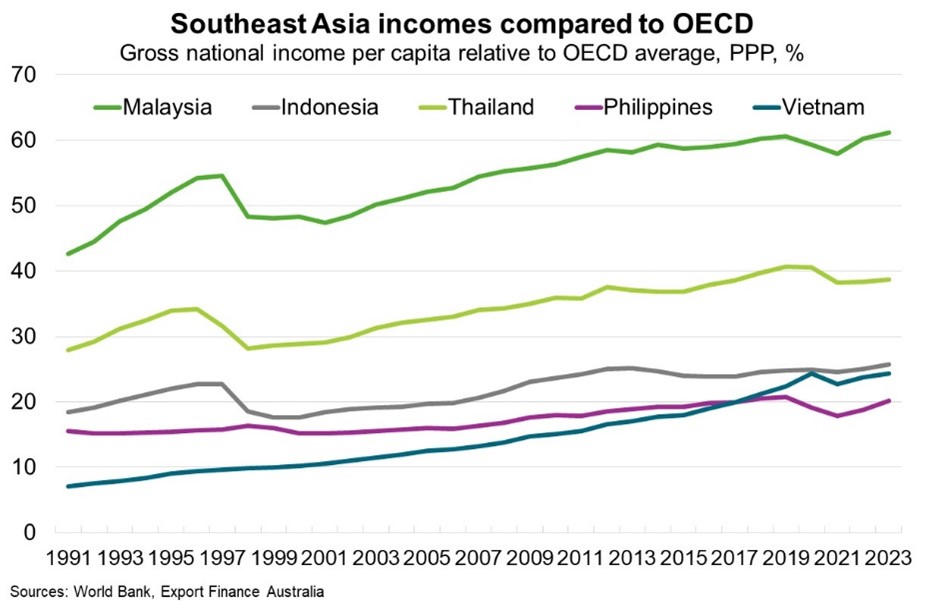© Export Finance Australia
The views expressed in World Risk Developments represent those of Export Finance Australia at the time of publication and are subject to change. They do not represent the views of the Australian Government. The information in this report is published for general information only and does not comprise advice or a recommendation of any kind. While Export Finance Australia endeavours to ensure this information is accurate and current at the time of publication, Export Finance Australia makes no representation or warranty as to its reliability, accuracy or completeness. To the maximum extent permitted by law, Export Finance Australia will not be liable to you or any other person for any loss or damage suffered or incurred by any person arising from any act, or failure to act, on the basis of any information or opinions contained in this report.
Malaysia—Growing incomes bolster Australian export opportunities
Malaysia has achieved impressive real GDP growth of over 6% per year since the 1960s, putting the country on track to achieve high-income nation status by 2028. Malaysia’s incomes are higher than Southeast Asian peers and are converging quicker to the levels of more prosperous countries in the OECD, improving living standards (Chart). The strong economic development record owes to large inflows of foreign direct investment into electronics and chips manufacturing, a large services and tourism economy, and a competitive resource sector.
Prospects are good that Malaysia can maintain strong economic growth ahead. Real GDP grew 5.9% year-on-year in Q2 thanks to strong consumer spending, up from 4.2% in Q1 and the fastest growth since Q4 2022. The IMF expects real GDP growth to average 4.1% per year between 2025 and 2029. Favourable demographics and an expanding middle class bode well for continued robust consumption growth. The government’s long term development plan, called Shared Prosperity Vision 2030, if effectively implemented, should raise labour skills, reduce wealth and income disparities and combat corruption, helping to enhance the business environment and take advantage of new opportunities in technology-intensive sectors.
Malaysia’s growing incomes and trade focused economy (the trade-to-GDP ratio has averaged over 130% since 2014) presents significant opportunities for Australian exporters of food and beverages, education, health care, digital economy (e-commerce and fintech), infrastructure and resources and energy. The Malaysia-Australia free-trade agreement provides tariff-free entry for 99% of Australian exports, offering particular benefits for milk, processed foods, wines and rice manufacturers, while Australia’s Southeast Asia Economic Strategy includes new measures to increase trade and investment with the region, including Malaysia. The quality of Malaysia’s logistical network is also high (26 out of 138 countries in the 2023 Logistics Performance Index), supporting exporters’ market access. Australia exported $13.6 billion of goods and services to Malaysia in 2023, making it our 11th largest export market.

